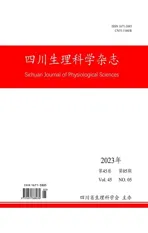Biological and pathological mechanisms leading to the birth of a small vulnerable newborn
2023-08-24PatriciaHunteretal
Patricia J Hunter,et al.
The pathway to a thriving newborn begins before conception and continues in utero with a healthy placenta and the right balance of nutrients and growth factors that are timed and sequenced alongside hormonal suppression of labour until a mature infant is ready for birth.Optimal nutrition that includes adequate quantities of quality protein,energy,essential fats,and an extensive range of vitamins and minerals not only supports fetal growth but could also prevent preterm birth by supporting the immune system and alleviating oxidative stress.Infection,illness,undernourishment,and harmful environmental exposures can alter this trajectory leading to an infant who is too small due to either poor growth during pregnancy or preterm birth.Systemic inflammation suppresses fetal growth by interfering with growth hormone and its regulation of insulin-like growth factors.Evidence supports the prevention and treatment of several maternal infections during pregnancy to improve newborn health.However,microbes,such as Ureaplasma species,which are able to ascend the cervix and cause membrane rupture and chorioamnionitis,require new strategies for detection and treatment.The surge in fetal cortisol late in pregnancy is essential to parturition at the right time,but acute or chronically high maternal cortisol levels caused by psychological or physical stress could also trigger labour onset prematurely.In every pathway to the small vulnerable newborn,there is a possibility to modify the course of pregnancy by supporting improved nutrition,protection against infection,holistic maternal wellness,and healthy environments.
杂志排行
四川生理科学杂志的其它文章
- Haemochromatosis
- GWAS and meta-analysis identifies 49 genetic variants underlying critical COVID-19
- Polygenic scoring accuracy varies across the genetic ancestry continuum
- Uridine-derived ribose fuels glucose-restricted pancreatic cancer
- 更 正
- Microbial peptides activate tumour-infiltrating lymphocytes in glioblastoma
